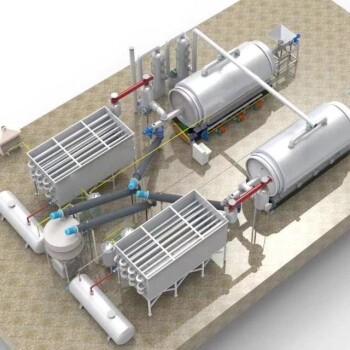Tyre pyrolysis can indeed be profitable, especially when considering the advantages of modern pyrolysis plants. These plants are designed for large-scale industrial production, offering low production costs and high profitability. The process converts waste tires into valuable products like fuel oil, carbon black, syn-gas, and steel wire, which can be sold or further processed. Additionally, pyrolysis is environmentally friendly, as it avoids secondary pollution through advanced de-dusting systems and hydroseals. This method is superior to traditional disposal methods like landfilling or burning, which often result in significant environmental harm. Overall, investing in a pyrolysis plant can be a lucrative and sustainable business venture.
Key Points Explained:
-
Large-Scale Industrial Production
- Pyrolysis plants are designed for industrial-scale operations, making them suitable for handling large volumes of waste tires. This scalability ensures that businesses can meet demand and maximize output, which is essential for profitability.
-
Low Production Costs and High Profits
- The production cost of running a pyrolysis plant is relatively low compared to the value of the end products. This cost efficiency, combined with the high market demand for products like fuel oil and carbon black, results in significant profit margins.
-
High-Quality Output Products
- The fuel oil produced by pyrolysis is of high quality and can be sold directly or refined into higher-grade products. Other outputs, such as carbon black and steel wire, also have substantial market value, further enhancing profitability.
-
Environmental Friendliness
- Modern pyrolysis plants are equipped with de-dusting systems and hydroseals that prevent harmful emissions, making the process environmentally sustainable. This compliance with environmental regulations reduces the risk of fines and enhances the business's reputation.
-
Energy Efficiency
- The rotary running mechanism in pyrolysis plants ensures efficient heating, which saves energy and reduces operational costs. This efficiency contributes to the overall profitability of the plant.
-
Superior to Traditional Disposal Methods
- Unlike landfilling or burning, pyrolysis does not generate secondary pollution or waste raw materials. This makes it a more sustainable and economically viable option for waste tire disposal.
-
Market Demand for Recycled Products
- The growing demand for renewable energy and recycled materials ensures a steady market for the products generated by pyrolysis. This demand supports long-term profitability and business growth.
In conclusion, tyre pyrolysis is not only profitable but also aligns with global trends toward sustainability and environmental responsibility. Investing in a pyrolysis plant can provide a steady income stream while contributing to a cleaner environment.
Summary Table:
| Key Factors | Details |
|---|---|
| Large-Scale Production | Handles large volumes of waste tires for industrial operations. |
| Low Production Costs | Cost-efficient process with high-profit margins. |
| High-Quality Output Products | Produces fuel oil, carbon black, syn-gas, and steel wire with market value. |
| Environmental Friendliness | Advanced systems prevent emissions, ensuring sustainability. |
| Energy Efficiency | Rotary mechanism reduces energy use and operational costs. |
| Superior to Traditional Methods | No secondary pollution; sustainable alternative to landfilling or burning. |
| Market Demand | Growing demand for renewable energy and recycled materials. |
Ready to invest in a profitable and eco-friendly tyre pyrolysis plant? Contact us today to get started!









